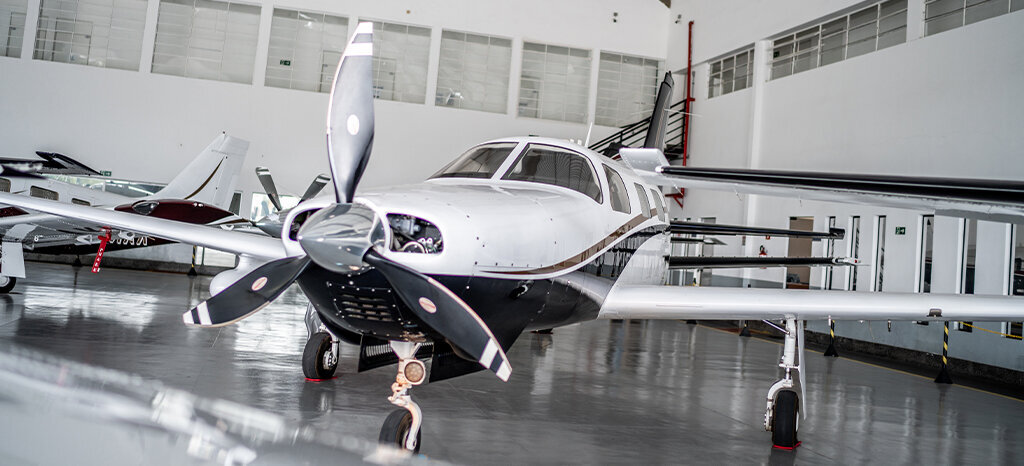
It is common for pilots to find themselves operating aircraft that belong to someone else. That might involve a flight instructor providing instruction in another’s aircraft, a pilot-in-training operating a flight school’s plane or an experienced pilot taking the controls in a friend’s aircraft as what’s called a “permissive user,” to name a few of the most common scenarios.
Supplemental non-owned insurance (commonly referred to as renters’ insurance) is not intended to replace the financial responsibility of the aircraft owner; rather, this is coverage for you as the operator of the aircraft. If you cause damage to a rented or borrowed aircraft, the aircraft owner’s insurance company typically pays for the repairs. However, the insurer may then “subrogate” against you (or your aircraft renters’ insurance) to recover its costs, especially if you were found to be at fault. Your aircraft renters’ insurance policy is designed to protect you from this financial exposure by covering your liability to the aircraft owner or their insurer.
Critical in all of these situations is that the pilot has inherent responsibilities and potential liabilities not covered by the aircraft owner’s insurance. That is why personal non-owned aircraft insurance is coverage every pilot should know about and obtain if appropriate.
What Is Personal Non-Owned Aircraft Insurance?
Some people are familiar with the concept of insurance for “non-owned” vehicles in the automotive sense. Businesses will sometimes have what is called hired and non-owned auto insurance, which provides liability protection when an employee drives a vehicle that isn’t a company asset. A typical example is an employee making deliveries in their own vehicle.
Personal non-owned aircraft insurance follows the same principles. Also called aircraft renters’ insurance, it protects against the financial repercussions of incidents that occur while flying someone else’s aircraft. This type of policy is referred to as “excess” coverage, meaning it is in addition to other insurance available to the insured under existing policies and is designed to address potential coverage gaps that can leave a pilot exposed to significant financial risk.
Aircraft Renters’ Insurance: Core Coverages
While there may be some variation among providers in their aircraft renters’ insurance, policies typically include the following coverages:
- Legal liability coverage. This is the foundation of any aircraft renters’ policy. It protects against claims for bodily injury (to individuals not on board the aircraft) and property damage to third parties. Some policies may also offer coverage for passengers.
- Property damage to non-owned aircraft (hull coverage). While the aircraft owner’s policy covers their aircraft, this insurance specifically protects you against financial responsibility for damage to the aircraft you are renting or borrowing. It can cover the owner’s deductible, which can range from hundreds to thousands of dollars and may even provide “loss of use” coverage, compensating the owner for the income lost while their aircraft is out of commission due to repairs. On some policies, this may be limited to a certain number of days or an indemnity amount.
- Legal defense coverage. Many aircraft renters’ policies cover legal defense costs in the event of a lawsuit stemming from an accident. This coverage pays the cost of an attorney and associated expenses, regardless of whether you are ultimately found liable. Typically, this is not subject to and is outside the limit of liability.
- Medical expense coverage. Some policies offer medical payment coverage, which can help with medical bills if occupants (other than the pilot) are injured.
- Flying club coverage. For pilots in flying clubs or fractional ownership arrangements, some policies extend coverage to aircraft in which there is up to a 25% ownership share.
Frequently Asked Questions About Non-Owned Aircraft Insurance
What happens if damage to the aircraft exceeds my policy limits?
If the cost of damages resulting from an incident exceeds your aircraft renters’ insurance policy limits, you will typically be personally responsible for the balance. For example, if you have $50,000 in physical damage coverage and cause $75,000 worth of damage, you would be liable for the additional $25,000.
How does crossing borders affect non-owned aircraft insurance coverage?
Policies typically have clearly defined “territories” where coverage is valid. Flying outside of these specified territories—even inadvertently crossing a border—could void your coverage. International flights generally require specific endorsements or separate policies to ensure you are covered for liability and hull damage while operating in foreign airspace or landing in other countries.
Are coverage rules in Canada and Mexico the same as in the U.S.?
Coverage rules can vary significantly between the U.S. and other countries or regions. They are also subject to change. Consequently, it is crucial to research and understand the current aircraft insurance requirements wherever you intend to fly, as well as your covered policy territory.
What steps should I follow to obtain aircraft renters’ insurance?
The process for purchasing aircraft renters’ insurance is straightforward. You should:
- Carefully assess your needs. Consider factors such as the types of aircraft you typically rent, their value and your usual flight patterns (local, cross-country, international).
- Determine the optimal coverage limits. Think about how much liability coverage you need and what level of physical damage coverage you want for the aircraft you rent. Rental agreements often specify the deductible you would be responsible for, which can help guide your physical damage coverage limits.
- Gather information. When purchasing insurance, you will need to provide details about yourself (such as pilot certificate, ratings, total flight hours and hours in type) and sometimes information about the aircraft you intend to rent (make, model, value).
- Get quotes and compare policies. Obtain quotes from aviation insurance providers, brokers and agents and carefully review them, paying attention to coverage limits, deductibles, exclusions and policy territories. Some of these can be obtained directly on the insurance company providers website. Keep in mind that your focus should be securing adequate financial protection rather than finding the lowest premium.
- Purchase your policy. Complete the aircraft renter’s insurance application and make your payment. You will then receive your policy documents, which you can provide to third parties as proof of insurance.
- Keep your coverage current. Ensure your policy remains active to avoid any gaps in coverage.
How can I obtain the best rate for my aircraft renters’ insurance?
Underwriters consider several factors when determining your insurance rate. You can get the most competitive rates in several ways, including maintaining a clean claims history, staying current and logging more flight hours, obtaining additional ratings (instrument rationing, multi-engine rating, etc.) and potentially getting discounts through memberships in aviation organizations like the Aircraft Owners and Pilots Association (AOPA). You can also manage your costs by choosing appropriate coverage limits. While it is critical to be adequately insured, you should avoid overpaying by ensuring your coverage aligns with your needs and the value of the aircraft you typically fly.
Personal Non-Owned Aircraft Insurance: Essential Financial Protection for Pilots
Personal non-owned aviation insurance is a fundamental component of responsible aviation for anyone operating an aircraft they do not own. From protecting your personal assets against potential liability claims to meeting the requirements of flight schools and providing a crucial layer of excess coverage, it is critically important.
By asking the right questions, understanding policy nuances and making an informed purchase decision, you can secure financial protection and powerful peace of mind as you pursue your passion for flight.
About Global Aerospace
Global Aerospace has a century of experience and powerful passion for providing aviation insurance solutions that protect industry stakeholders and empower the industry to thrive. With financial stability from a pool of the world’s foremost capital, we leverage innovative ideas, advanced technology and a powerful synergy among diverse team members to underwrite and process claims for the many risks our clients face. Headquartered in the UK, we have offices in Canada, France, Germany and throughout the United States. Learn more at https://www.global-aero.com/
Global Aerospace Media Contact
Suzanne Keneally
Vice President, Group Head of Communications
+1 973-490-8588
Source: Prodigy.press
Release ID: 1612390






